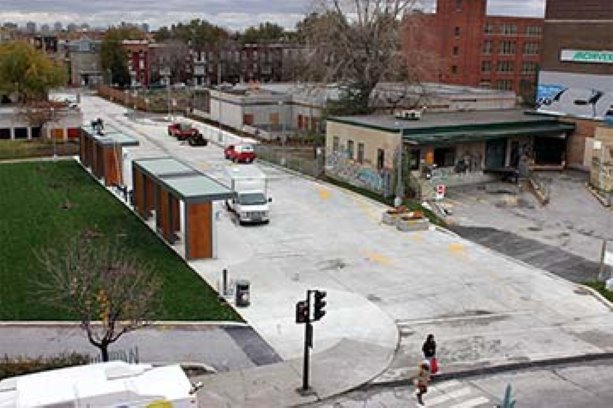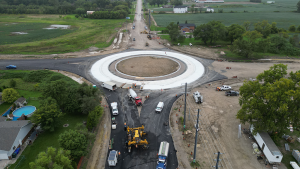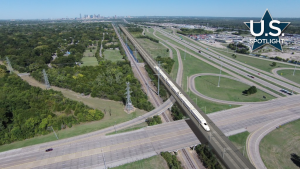A funny thing happened while constructing a new bus transit hub near downtown Montreal.
A funny thing happened while constructing a new bus transit hub near downtown Montreal.
Last year, while crews, headed by Ramcor Construction, were excavating to build an extension to Avenue Greene — which would become a bus-only street adjacent to the Lionel-Groulx metro station — they came across an old pedestrian tunnel.
The tunnel was in fact used by commuters of a bygone era, to go under train tracks where now the metro system’s orange and green lines meet at Lionel-Groulx, a key transfer point for today’s subway and bus passengers.
“That’s the metro now,” said Marc Bélanger, director of planning and development for the Société de transport de Montréal (STM). “It’s almost the same line.”
The concrete tunnel dated from the 1920s and measured 26 metres long, eight metres wide and 2.3 metres in height.
That put the entire new project, which really is only about 100 metres in length — bordering a city square — on hold for well over a year, which also happened to include a two-week province-wide construction strike last June.
It wasn’t just the unexpected tunnel which gave engineers pause. The tunnel turned out to be filled with contaminated soil.
“In the tunnel there was some contaminated soil so we had to remove all of it,” Bélanger said.
Jackhammers destroyed the submerged structure before crews were able to backfill and build the north-south concrete street between rue Saint Jacques and rue Delile.
Also, sewer and power hook ups has to be reconfigured. The sewer pipe was to be cast iron, requiring a simple connection. But the excavation found a steel pipe which required welding.
Lionel-Groulx was chosen for the project because of its relatively easy access to the city’s far flung west island suburban municipalities. Several new express routes had been created to quickly move passengers on dedicated bus lanes from the west island to the station as part of an effort to ease traffic through the often bottlenecked Turcot expressway interchange, itself slated for major reconstruction.
And those routes needed space to pick up and disembark passengers. There are now a dozen lines serving the station, with the express lines adding more than 100 extra buses a day.
The metro station is also close to the Autoroute 20 downtown expressway.
“So it’s a gateway to go downtown for transit riders,” Bélanger said.
The project, which originally got underway in August 2012, was completed in early November of this year.
What was different about it was that a separate street was created for buses, unlike other STM terminals which are generally situated within bus loops.
Also new were the types of passenger shelters.
There are two shelters, manufactured by Industrie Fabco in Drummondville, Que. and unconventional for the city since they are considerably larger than conventional street corner shelters.
They are also blue in colour, coordinated to the paint scheme for the city’s buses and metro. Each shelter has an approximate height of 3.5 metres, length of 12 metres and depth of 3 metres.
Also unique is the use of composite panels coated with natural wood made by Prodema. Laminated glass completed the structures.
Lionel-Groulx is located in a highly-trafficked tight labyrinth of streets and the terminal upgrade saw seven new pedestrian crossings, upgraded signalization, and textured tiles for the disabled community.
“We changed all the lighting in the area, along the pedestrian trails and in the terminal,” Bélanger said.
Also new is a controlled access bike parking shelter, which can only be entered through use of a special fare applied to the STM’s OPUS smart card.
The project cost $3.3 million and was covered by the province’s transportation ministry.











Recent Comments
comments for this post are closed